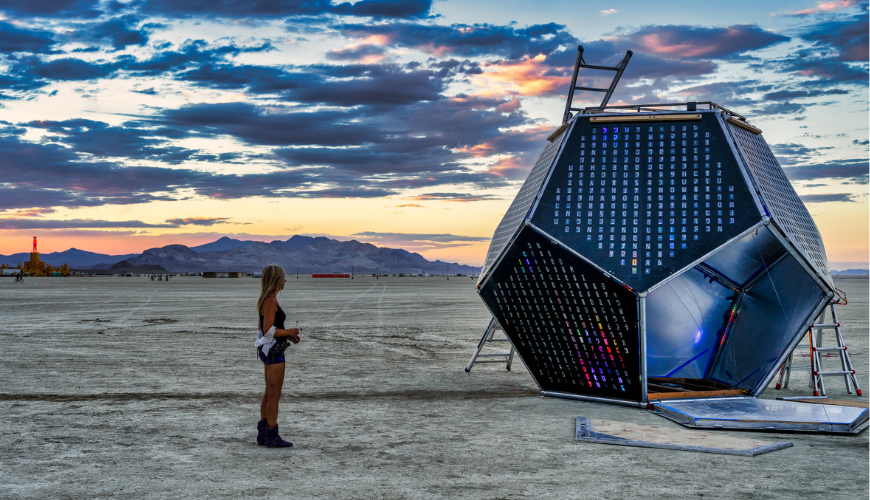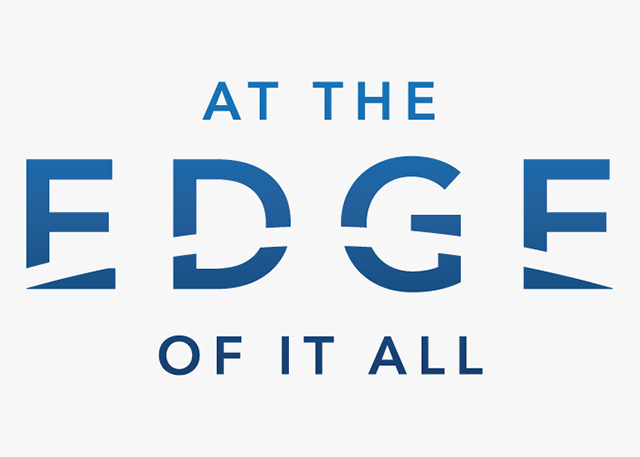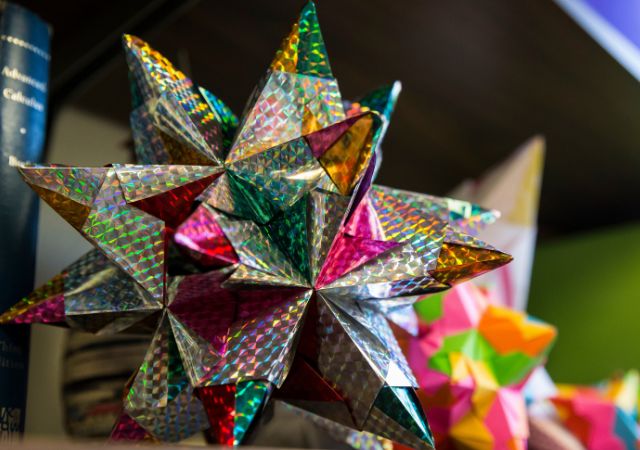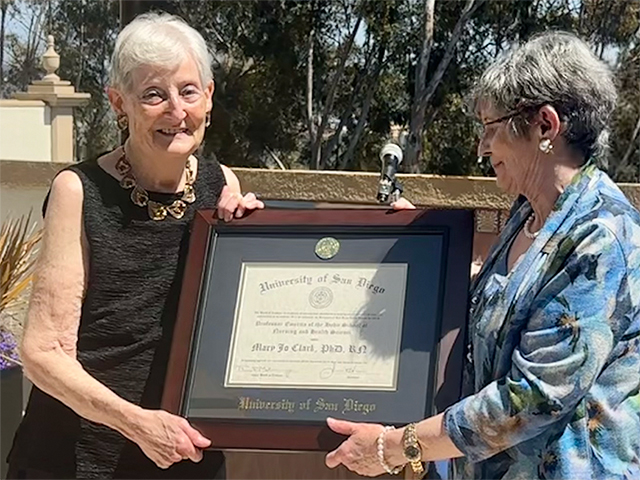Faculty Spotlight: Adding Art to the Equation with Diane Hoffoss

In the corner of a bustling warehouse in San Diego, Diane Hoffoss, PhD, stands surrounded by circuitry and LED lights. It's a far cry from the abstract world of topology where she began her mathematical career, but for Hoffoss, it represents the culmination of an unexpected journey that has transformed not just her professional life, but her understanding of what it means to be both a mathematician and an artist.
As a mathematics professor at the University of San Diego (USD), Hoffoss has found herself at the intersection of seemingly disparate worlds: the theoretical realm of mathematics and the hands-on universe of large-scale art installation. Her path to this junction wasn't planned — it emerged from a series of serendipitous encounters and a willingness to venture beyond the realm of academia.
"From the outside, doing math looks just like sitting there," Hoffoss laughs. "Math is an activity of the mind." But in 2016, something changed. After visiting Burning Man for the first time, Hoffoss discovered a way to marry her love of mathematical concepts with physical creation, getting her body up and moving.
Her breakthrough came with "Unfolding Humanity," a massive interactive sculpture based on an unsolved mathematical problem dating back to the Renaissance artist Albrecht Dürer. USD Professor of Mathematics Satyan Devadoss, PhD, and Hoffoss developed a project for one of Devadoss’ classes where teams of students proposed sculptures that addressed an unsolved math problem. Unfolding Humanity transformed from an idea into a 12-foot-tall dodecahedron covered in LED lights and mirrors. The piece explored not just mathematical concepts, but deeper questions about the shape of our universe and about technology's role in human connection.
"We had these faces of the dodecahedron representing technology walls between us," Hoffoss explains. "But inside, we placed mirrors to reflect humanity back at itself." Each of the faces of the sculpture opened up — or unfolded as the name implies — to represent the removal of some technological barrier connecting those standing on the inside with those on the outside in a more human way.
The project represented more than just an artistic achievement — it became a bridge between academic theory and tangible reality, between faculty and students, between university and community.
This successful collaboration led Hoffoss to become a founding member of ArtBuilds, a collective of USD faculty, students and community members dedicated to creating large-scale interactive art installations whose aim is to spark joy and engage its audience in play. The group combines engineering expertise, mathematical concepts and artistic vision to produce works that challenge viewers while fostering cross-disciplinary collaboration.
This fusion of mathematics and making has led Hoffoss to her current role as a director at San Diego CoLab, a unique makerspace supported by the San Diego Collaborative Arts Project. Unlike most makerspaces that require membership fees, CoLab is entirely free to the community. "We really want no barrier to entry," she emphasizes. "If you have a desire to make art, we will open up the place and you can come and do your thing."
The space has become more than just a workshop for Hoffoss — it's become a second home, a place where the theoretical precision of mathematics meets the messy reality of creation. Here, she has found a supportive community that helps her wildest ideas become realities. "The people that I've met at CoLab are unbelievably genuine, open-hearted, supportive and generous with their knowledge," she says, her voice warming with emotion. "Being creative and inspiring and giving — it's just the best of community."
The journey has also allowed her to reconnect with aspects of herself from her past. Growing up as a Navy kid who moved every couple of years, Hoffoss spent time working alongside her father, a woodworker, making "tiny little things next to his big things." Years later, before his passing in 2018, she found herself calling him to discuss mechanical solutions for her art installations, having conversations that bridged their different worlds in ways she hadn't imagined possible.
Today, Hoffoss is as likely to be found teaching topology to university students as she is programming LED displays or working with power tools. She's helping to create a new model of what it means to be both an educator and a maker, showing students that the boundaries between theoretical and practical knowledge are more permeable than they might think.
Her work at CoLab has revealed another crucial insight: the importance of creating spaces where people feel comfortable making mistakes and asking questions. The makerspace's collaborative environment encourages all people to actively participate, experiment and develop their skills. Female students have particularly noted how CoLab's egalitarian atmosphere has empowered them to fully engage in projects and take leadership roles alongside their male peers.
"I've learned that no matter how hard I try, I'm never going to know everything," Hoffoss reflects, discussing how mathematics taught her humility. "But I can still do some cool stuff and make a contribution." It's a lesson she's eager to share with students who might be intimidated by mathematics or art creation. "Everyone has imposter syndrome," she says, "but we should still go forward with the things that we want to do in life.”
– Kelsey Grey ‘15 (BA)
Contact:
USD News Center
news@sandiego.edu
(619) 260-4681



